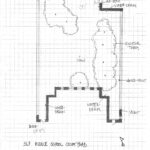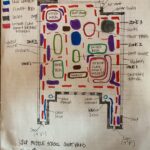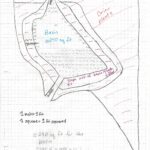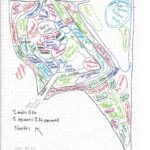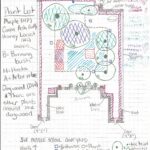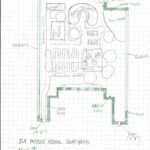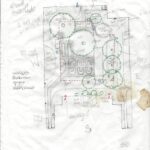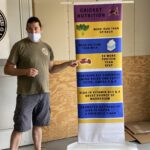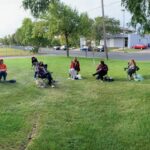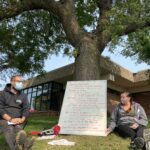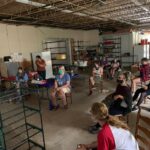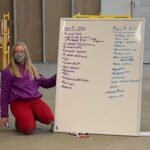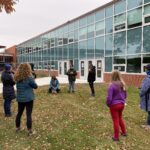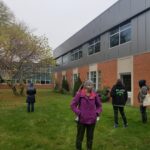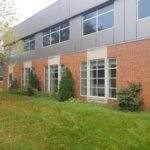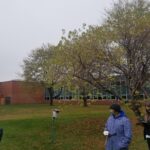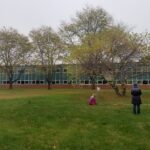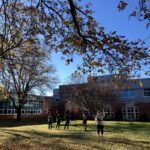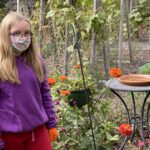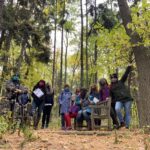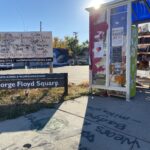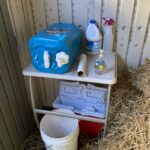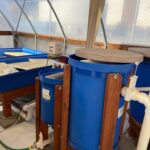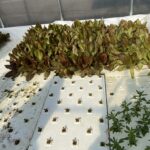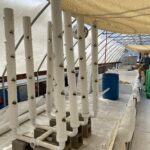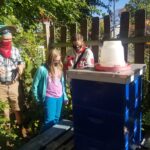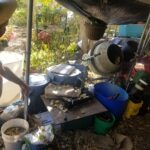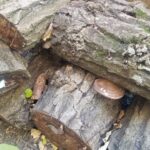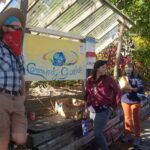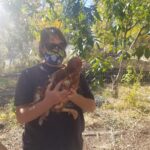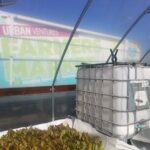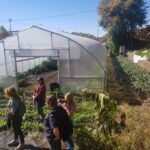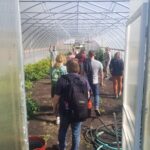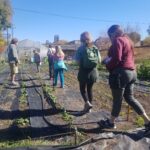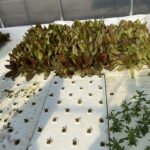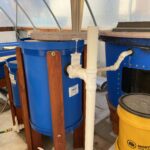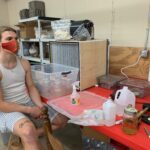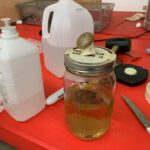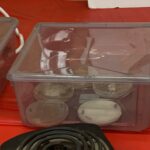Final report for FNC20-1246
Project Information
SLP SEEDS is a non-profit doing business as Seeds Feeds. We are dedicated to growing and providing food to nourish people, community and the earth. We install and maintain schoolyard and community Food Bank Gardens teaching community members and schools for three years until they are able to maintain their own gardens. We distribute food for free to anyone in the community in need, no questions asked. We provide urban agriculture education, run an intern/apprentice program, hold community meals and visioning sessions to make sure our goals are aligned with the needs of the community and we advocate for food justice and security. SEEDS acronym starts with Sustainable and Edible with Education, Diversity and Service all linked together. We plant seeds of change to empower the disadvantaged and urban gardeners/farmers. We teach, we advocate, we feed, we plant and harvest a new work force in the coming industry of urban agriculture.
This proposal addresses the lack of education connecting urban youth (and adults) to nature and food. SLP SEEDS proposes training 10-15 high school youth and community members in Permaculture Design to culminate with a plan for an Urban Educational Youth Farm.
Permaculture Design is a stewardship lens clarifying how to work with nature to create abundance and resiliency, connecting participants with nature and food while teaching ‘systems design’ that addresses the community’s needs alongside the available environment. Community Engagement will be employed in assessing needs.
The project will empower individuals or teams to design an Educational Urban Youth Farm. Site evaluations will be conducted and contracts pursued with the school district and sponsoring local corporations and organizations before 2021. Several schools and affordable housing complexes are in discussions as a final site partner for the permaculture participants’ final designs.
A community presentation in April, 2021, will culminate this project design demonstration to cull the best of the designs into a final plan for the chosen site.
Social responsibility describes the Three Ethics of Permaculture: Care for Earth, Care for People, and Share the Surplus. Permaculture also addresses regenerative economics, social and food justice, and economic viability of Urban Agriculture.
The main objective is to educate and connect 10-15 high school youth and adults to nature and their food, as well as building a foundational understanding for participants in designing an Urban Agriculture Educational Youth Farm.
Another objective is the site evaluation, selection and contracting of the farm space to be conducted with participants, community members and landowners as part of the education process.
The culminating objective is a completed Educational Urban Youth Farm Plan, designed by course participants yet guided by community engagement.
This proposal also covers administrative personnel costs in recruitment, coordination, site research, evaluation and contract negotiation.
Cooperators
- (Educator)
Research
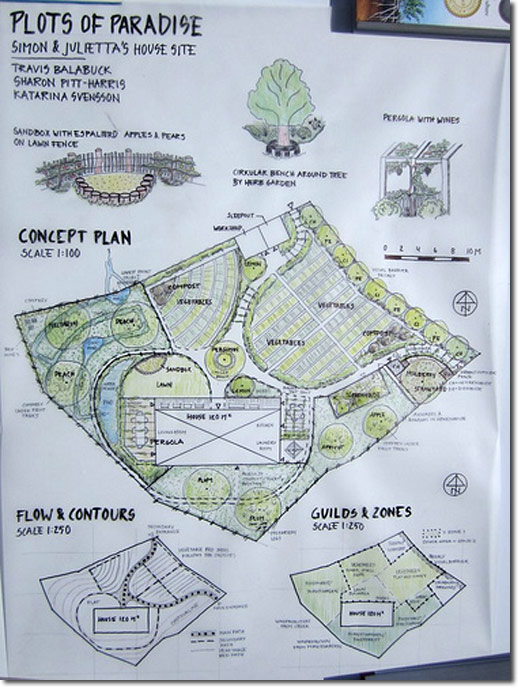
Choosing an Urban PDC came from community visioning held over several years. The logic behind using Urban Permaculture as a philosophy to connect disadvantaged youth and community members to nature and to their food is based upon our work with food-insecure and disadvantaged populations as well as people passionate about the intersection between climate, equity, resiliency and health all centered around safe, local fresh food access and affordability. Normally this course costs $1,100 per student. We aim to offer it for free to those whose disadvantage would otherwise cause a financial barrier to such education.
Planning a schoolyard garden program will connect youth and the community to nature and their food while at the same time raising the number of fruits and vegetables consumed by students, teachers, staff and families experiencing food insecurity.
Some of the PDC course subjects covered include:
- Permaculture design ethics and principles.
- Creating abundance with natural patterns.
- Nutrient dense "beyond organic" gardening and farming.
- Grow more food with less work by working with nature.
- Edible landscaping, food in small spaces.
- Building rich, live soils.
- Designing sustainable water use.
- Greywater and rainwater catchment.
- Building food forests.
- Agroforestry and ecoagriculture, regenerative farming.
- Aquaculture.
- Composting and vermicomposting.
- Alternative pest management.
- Natural building, regenerative building technology.
- Best forms of sustainable energy.
- Appropriate technology.
- Boosting your career with permaculture.
- Sustainable economics.
- Increasing quality of life through “placemaking” design.
- Community revitalization and rebuilding.
- Successful intentional communities, ecovillages and cohousing, urban and rural.
Site visits to other Permaculture based farms will enhance participants knowledge and understanding of why and how Permaculture works and inspire their designs for a final product.
TEACHING MATERIALS USED:
Permaculture City by Toby Hemeneway
The original 72 hour Mollison/Holmgren PDC.
Rosemary Morrow’s User’s Guide to Teaching Permaculture
Utilize Google Earth as a design tool.
We achieved, despite the pandemic, a cohort of 10 individuals (not including myself or our facilitator) graduating from the 72-hour intensive Permaculture Design Certification Course. The pandemic made it difficult to achieve more participants from the high school, however, despite the facilitator's pre-conceived notion that the course was too challenging for middle school students, he did allow one 6th grader who attends the middle school to participate if her mother would take the course as well. He was more than pleasantly surprised at how involved the 6th grader was in all the projects and the final mapping of the design, which led him to reconsider teaching more youth in the future.
We achieved, despite the pandemic, three farm tours and two site visits to the middle school courtyard for site analysis.
We achieved including a "social plan" for the project, to address social inequities and create an inclusive model for education and engagement.
We achieved a well-planned design for the middle school courtyard, although just before the presentation we were told we would no longer have access to it due to Covid restrictions and public access issues. However, the graduates are already working on site evaluations with the school district and are prepared to create a new plan for the new chosen site.
Educational & Outreach Activities
Participation Summary:
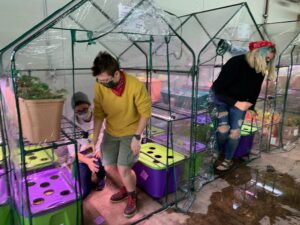
The 72-hours were done for the first time as a hybrid of in-person instruction and online.
Consultations with the course facilitator, Rob Czernik, were given twice to each individual as well as team consultations for the designs.
Two on-site demonstrations were given to participants with hands-on learning and a take-home kit for mushroom growing and in vermicomposting (worms).
Two newsletters were sent to our mailing list and copied to our Facebook and Instagram accounts. Our newsletter goes to over 700 people, and our facebook and instagram followers total over 1,000. There is some overlap between the three avenues. Another article was published by the local newspaper, Sun Sailor, inviting the public to our online presentation to give feedback. Read the article here.
Three tours were conducted for the participants including the Westwood Hills Nature Center, Urban Ventures and Three Cricketeers (producers of crickets for human consumption!)
The online portion of the course included full days of webinars, talks and presentations. A full one-hour presentation of the final designs was given with each of the participants presenting a portion of the presentation. Twenty-five community members signed up for the presentation. Click here to watch.
Two field days were attended by all at the Middle School Courtyard to conduct site analyses (see maps in media files) and meet with school staff to discuss their needs and desires.
Twelve participants, aged 12-70 years old, attended and graduated the full course.
We also hosted two Introduction to Permaculture Workshops in February and March to gauge and build interest in the 10-day intensive. The first one was in person so we do not have footage, and the following was Rob’s first attempt with a virtual Introduction to Permaculture class that he taught, but we think it’s a good resource for other instructors or people interested in learning a little more: https://www.youtube.com/watch?v=osZ7LvMycCI&t=2sLearning Outcomes
This Permaculture Design Certification Course 72-hour intensive was the first hybrid of in-person and online trainings. We learned it can work, and utilized ZOOM breakout rooms for separate work spaces for the team members to collaborate on their designs. Eventually the two teams came together as one however, a "Social" Design Team also emerged in order to connect food justice issues into the course, the design and the strategic planning.
The course has well-prepared the participants working on another two Schoolyard Urban Farm designs. It was thought the course-designed project was the final project, however the courtyard access was rescinded due to Covid restrictions and public access issues. The school district is working with us to find a more appropriate venue. Through that tumult, another private school was recruited and is working with us per these designs for their own site evaluation and analysis.
The advantages of implementing a project such as this are providing free education to participants that otherwise could not attend. Only one participant paid full price for the course, with three others paying partial, and the remaining 7 doing work-study hours instead. It was also helpful to spread the course over 10 weekends, rather than every week or 10 days straight, so that participants had time to digest what they'd learned and opportunity to review and prepare in between without feeling too overwhelmed.
The biggest advantage was the final products, but even better is the life-long skills participants are already using for future projects.
The disadvantages were mostly due to Covid restrictions, however having taken the intensive course as a 10-day immersive (usually how it's offered) with a couple of "work-days" on a farm does have its advantages and disadvantages, as well.
QUOTES FROM PARTICIPANTS AFTER COURSE:
Project Outcomes
Copy of Permaculture Design Course Presentation (1)
FINAL REPORT FROM FACILITATOR, Rob Czernik:
